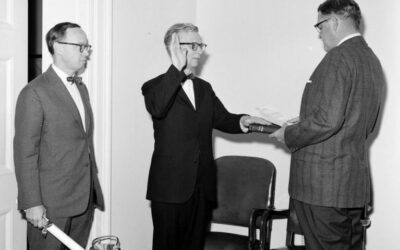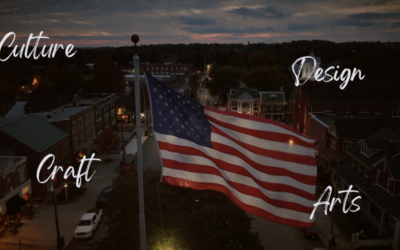CHILDREN AND ART
In this episode, 4A Arts executive director Gavin Lodge is reunited with his high school junior and senior English teachers, Katherine and Jim Starkey. This dynamic, married literary duo inspired their students to think deeper, write more expressively, and appreciate all things creative.
During this lively discussion they talk about the way Jim developed a teaching technique with a framed hammer, their romance that began with an artistic “assignment”, the reason they incorporated art into all of their English lessons, and their philosophies for how deeply high schoolers should (or should not) go down the Shakespeare rabbit hole.
This last bit is particularly hilarious as Katherine shares her “dirty old man theory of learning.”

Mastery of literature in high school is pointless. Exposure is important.
– Jim & Katherine Starkey
ADDITIONAL SHOW NOTES
J. Francis Mitchell Wardin (born “John” because she was the 4th of four girls and her father insisted on a boy’s name). Francis won a commission to paint a mural for the state of Kansas when she entered as “John Wardin.” The commission probably would have granted her an artistic career. But when the state and judges realized she was a woman, they canceled the commission.

In the discussion of their early romance, the Starkeys chat about the ”Brown” album by The Band and J.D. Salinger’s books Franny & Zooey, Nine Stories and Raise High the Roof Beam, Carpenter.
During this podcast, we frequently mention “Sunday in the Park with George,” the Stephen Sondheim musical about pointillist painter Georges Seraut and his imagined experience painting “https://www.artic.edu/artworks/27992/a-sunday-on-la-grande-jatte-1884”. (You may zoom in closely to see the individual paint dots.) Katherine talks about how the principles for artistic composition espoused in the musical informed her approach to teaching: “Order, design, tension, balance, harmony.”
Watch the Tony Award production of the original Broadway production on the left. Also – see “Cameron” fall down the rabbit hole at 1:15 staring at this work while “Ferris” is busy kissing “Sloane” in Ferris Bueller’s Day Off.
When I ask what artworks inspired their childhoods, Katherine mentions the cover of a children’s book that stuck with her, Kiki Plays the Piano. Jim’s childhood breath was taken away by Pompeo Batoni’s “Portrait of the Sacred Heart

As for pieces that most move Katherine and Jim in adulthood, they mention Pablo Picasso’s “Les Desmoiselles d’Avignon” housed at the MoMA in New York City.

But then they both movingly mention their granddaughter’s beautiful piece (below) that is their current pride and joy housed at their own house in Colorado.







